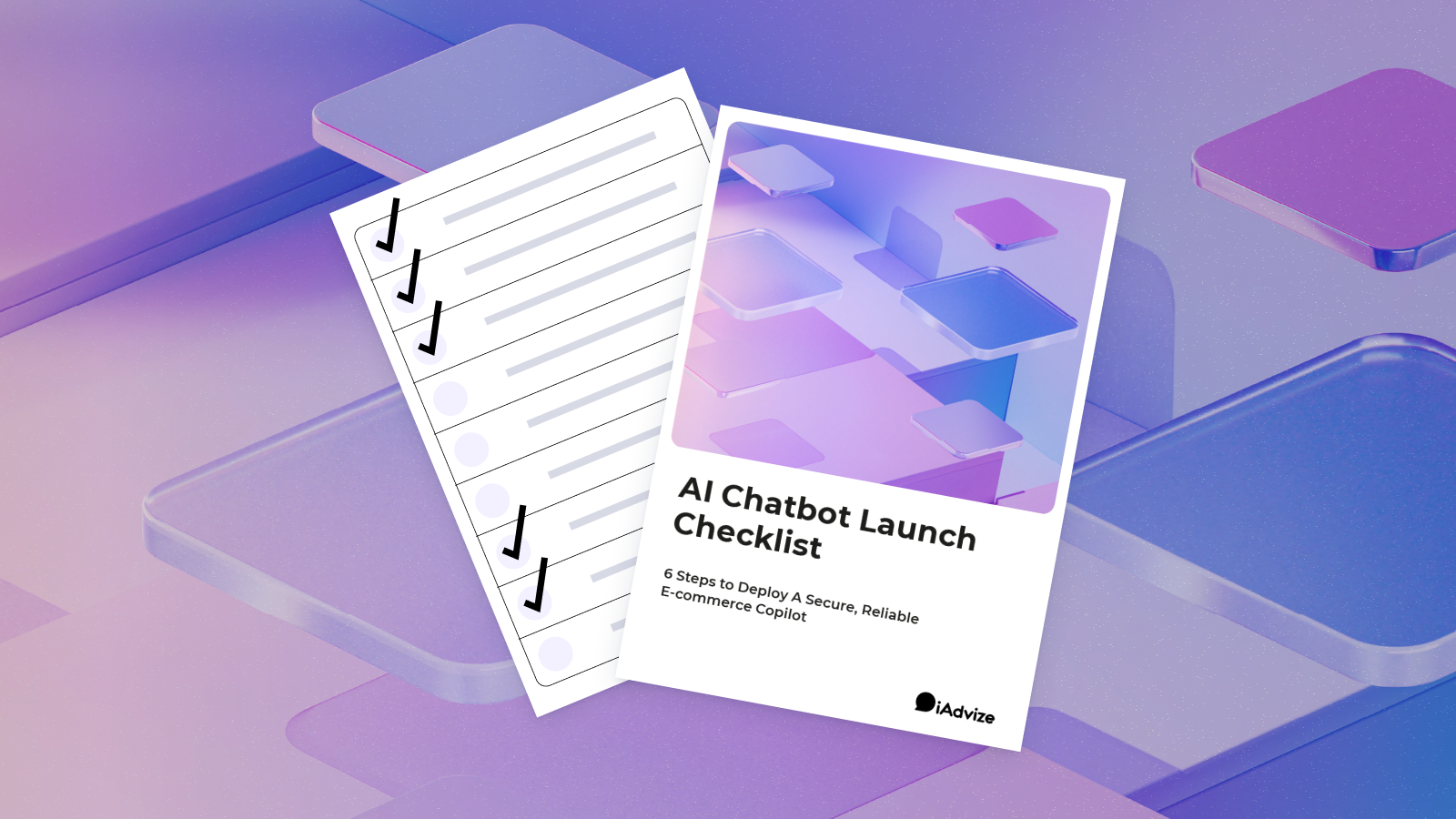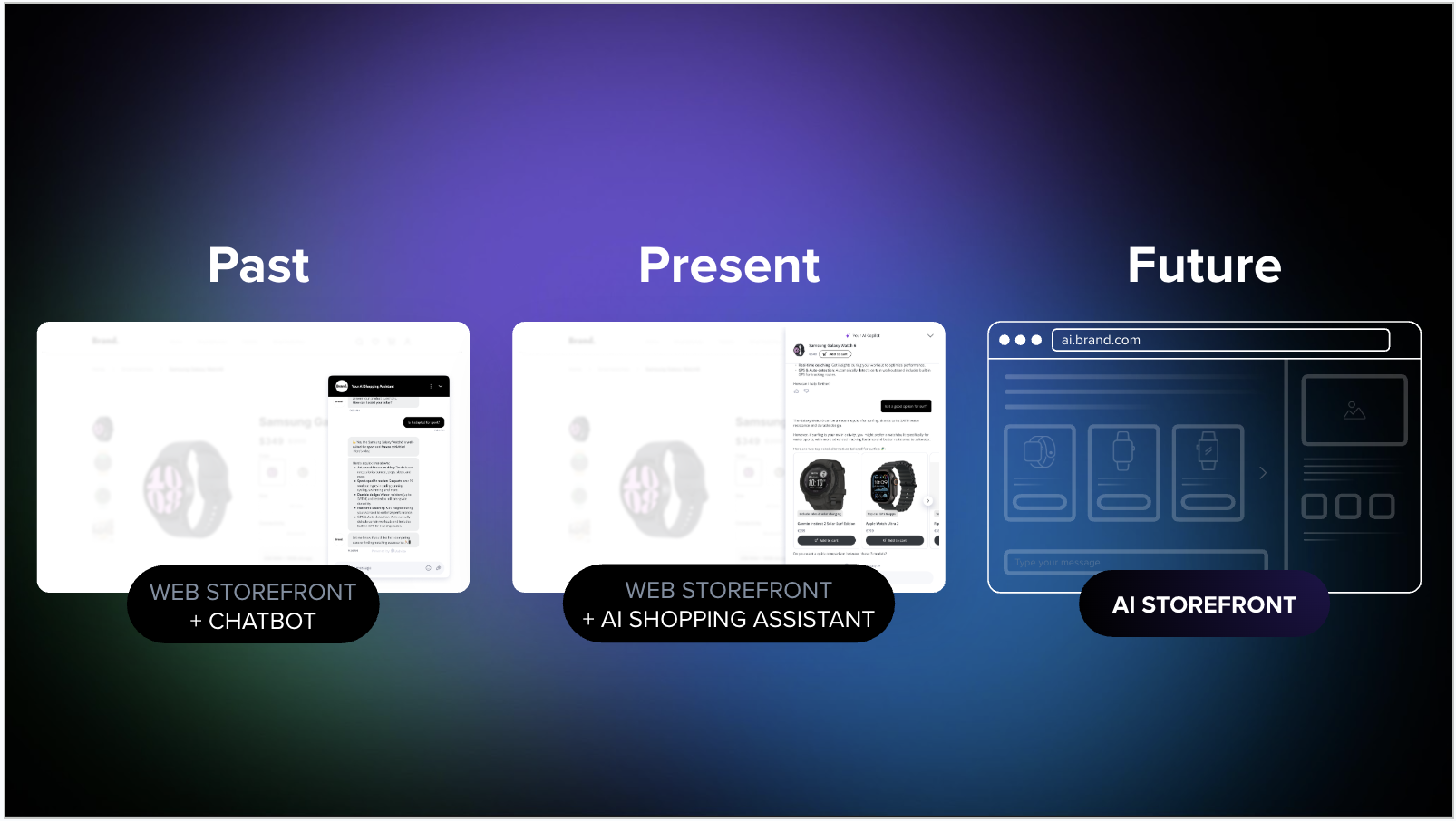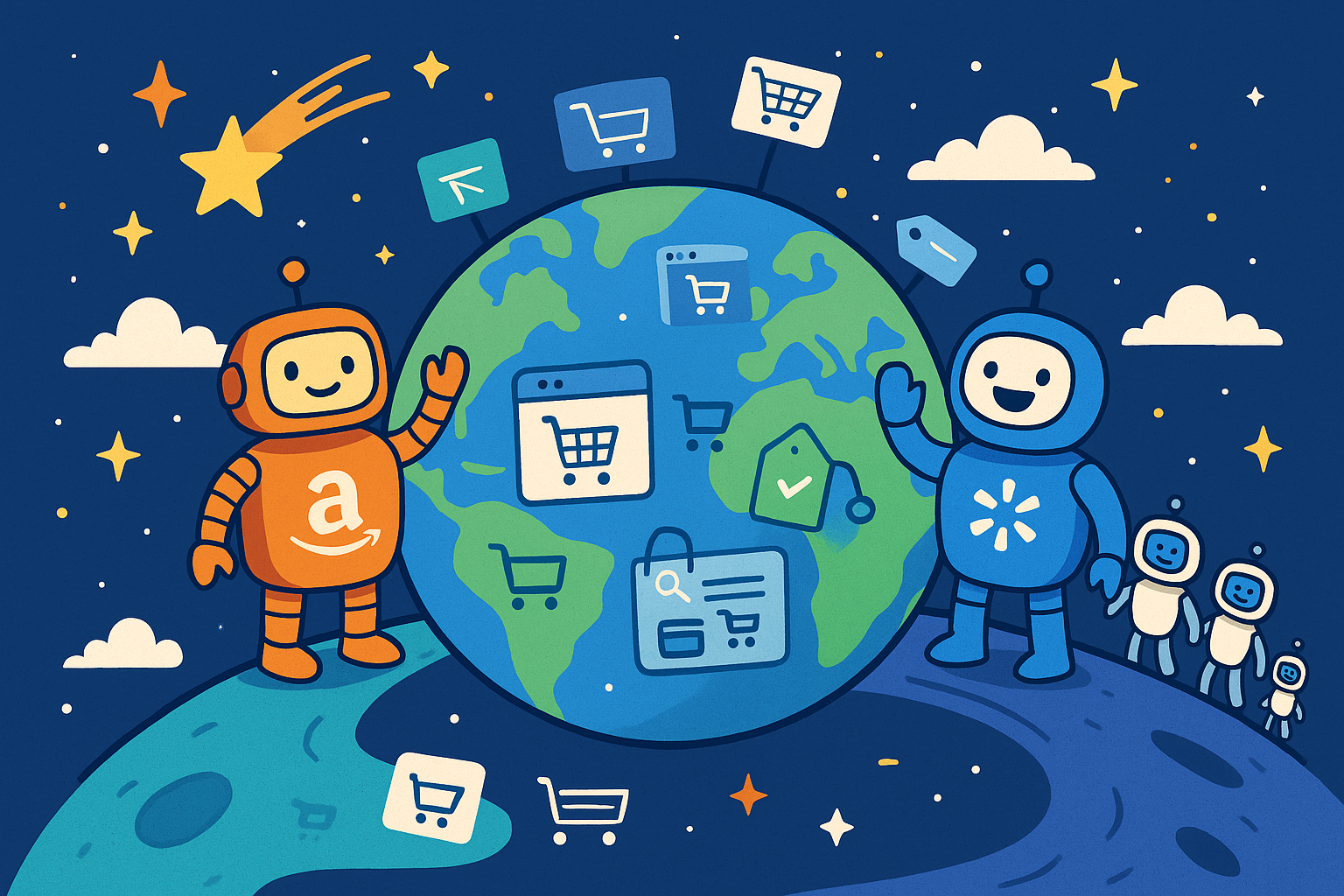How to Launch an AI Assistant on Your E-commerce Website in 6 Steps
Julia Lackey

The average e-commerce conversion rate hovers around just 3%—but this is changing rapidly. With the arrival of advanced artificial intelligence, the way brands and retailers are able to engage website visitors is improving their conversion rates up to 10x. Generative AI has revolutionized the digital customer experience, allowing retailers to offer personalized, seamless shopping assistance 24/7 via always-on chatbots. Welcome to the era of conversational commerce!
Forrester forecasts that by the end of 2024, 50% of B2C companies will invest in these technologies to improve their digital customer experience. Are you ready to join them and increase your online sales, following in the footsteps of companies like Sideshow and GetFPV?
If so, there are several factors to consider. Before implementing virtual assistants on your website, make sure you’ve covered all your bases with 6 key steps, drawn from insights of the generative AI integrations for over 100 e-commerce brands.
Generative AI is Changing the Way Businesses Connect with Consumers
Until recently, the term 'virtual assistants' likely conjured images of voice assistants such as Amazon Alexa, Google Assistant, Cortana, or Siri. Yet, the huge strides made in large language models (LLMs) have dramatically expanded the capabilities and implications of what the best AI assistants can do.
And because these technologies are still emerging, there are many opportunities to gain a competitive edge. To stand out in the digital space, it’s important to have a conversational strategy with artificial intelligence adoption at the core.
"Generative AI has definitely changed the game—there's no going back."
Sean Pontzer, Customer Service Manager at GetFPV
Designed to guide you through the deployment process, the steps below will help clarify your business objectives. With it, you can have your chatbots fully operational and meeting your goals in as little as two weeks.
1. Identify Your Key Business Objectives
Defining your business objectives is crucial for the success of your project. Below are three examples of goals set by leading brands and retailers.
- Online sales and revenue: You want to increase your conversion rate and/or average add-to-care rate.
- Customer relationships: You want to reduce ticket volume handled by human agents, limited customer response capabilities, and expensive traditional channel use (phone, email, etc.)
- Shopping experience: You want to better meet the expectations of website visitors by improving the product information gathering process, providing more personalized product recommendations, and enhancing self-service channels and automation.
An Ipsos study revealed that messaging (defined as a messaging app, live chat, or social network) takes the top spot as the most used way to contact e-commerce sites across all age groups. An impressive 90% of American consumers choose this channel to reach out to websites, with this figure jumping to 94% among 18-34 year olds.
2. Define Use Cases Relevant to Your E-commerce Strategy
Now is the time to evaluate your website’s user experience, analyzing your customers' buying journeys and identifying purchasing barriers. Think about what an ideal customer experience and customer service operation would look like.
It’s also important to consider any difficulties your customer service agents may face in responding to website visitors. After all, your teams are potential artificial intelligence users, as this technology helps them boost productivity and craft responses to customers more effectively.
To help you reflect on the applications most relevant to your business goals, here are some common challenges that an AI tool can alleviate:
- Your products generate a large number of customer requests. 20% or more of your site visitors' questions are inquiries about additional product information, and the response they receive is a decisive factor in purchase completion.
A common obstacle for e-commerce vendors is building a frictionless shopping journey. This is furthered by the fact that half of Americans will abandon their carts due to difficulties when searching for product information.
Conversational AI—or virtual assistance through messaging—has been recognized recently as a promising remedy to this issue, with 74% of consumers citing that they want it to help them get accurate information on products they’re interested in.
- Your site visitors have recurring requests. A large amount of the questions you receive are related to returns, payment methods, or delivery tracking.
The same Ipsos study also found that 65% of consumers are interested in using generative artificial intelligence to answer their post-purchase questions.
- Your site visitors are looking to find products that fit specific needs or criteria. They tend to ask detailed questions about your products that can’t be sufficiently answered by your FAQs.
The key features of the traditional search experience that’s existed on e-commerce sites for the past 10 years doesn’t promote conversions. This is why online businesses are shifting focus to providing engaging interactions to their customers that allow them to share their unique needs and get personalized responses.
- Your customer service team struggles to manage your website's ticket volume and isn’t available 24/7.
On the other hand, generative AI is capable of handling thousands of conversations at once and can respond to customer requests around the clock.
- Your customer service negatively impacts your resolution rate. Your agents’ productivity is diminished because they must spend the majority of their time working to understand the context of a site visitors’ request, rewriting and editing their responses, or searching for the right information to answer questions.
AI chatbots are not only capable of autonomously assisting your website visitors, but also supporting your customer service agents. Copilots built for this purpose can help increase productivity and lessen burnout among your teams.
- To mitigate resolution time, your customer service agents must sacrifice the quality of their responses on occasion, routinely sending messages to customers with grammar, spelling, or other errors that can be harmful to your brand image.
3. Set Operating Boundaries for Your Chatbot
With a clearer picture of the scenarios that may lead you to look for generative AI solutions, like e-commerce chatbots, you can decide on the key features like characteristics, rules, and tone that are important for them to follow.
- Product Information: Do you want to have virtual assistants on all your product pages or for certain product categories (e.g. by price range, region, specific features, measurements, etc.)?
- Languages: What language do your users primarily speak? Would you like your virtual assistants to be available in other frequently used languages. If so, which ones?
- Markets: Does your brand have multiple e-commerce websites and regions that could benefit from chatbot assistance?
- Tone: What characteristics does your virtual assistant need to have to be aligned with your brand’s image? For example, how friendly or serious should the tone be? Should responses include emojis or certain phrases? Should responses be centered on providing advice and recommendations or on encouraging purchasing?
- Custom Actions: What response rules will your virtual assistant follow? In what situations should your virtual assistant escalate a conversation to a human agent? For example, when users ask to speak to a human, when it can’t find an answer, when it’s unable to respond for another reason, etc.?
- Limitations: What type of request should your virtual assistant not handle, and instead transfer to a human agent to respond? For example, questions about competitors, insults, etc.?
4. Prepare Your Data Connection Sources
Data is the cornerstone of any chatbot implementation project. Without it, generative AI would lack effectiveness. To fully leverage its capabilities, it’s important to carefully and transparently connect it with your data in a way that best aligns with your brand’s ecosystem. There are different approaches to take for this process, the top three of which are outlined below.
- Your knowledge library is comprehensive, structured, and includes answers to frequently asked questions.
- Your product catalog is available in a CSV file, or accessible via a public URL. These are the ideal formats for feeding the generative AI all your product information and knowledge base content.
It’s essential to feed your chatbot complete and accurate descriptions of each product in your catalog so it can provide relevant and detailed responses to user questions.
- You have a product API. This is an alternative solution that’s better suited for larger product catalogs and content that’s constantly being updated.
5. Secure Your Brand Ecosystem
Data security is essential. For effective chatbot implementation, your business requires a tool that you can trust to safeguard the data of both your company and your customers. It’s important that your chosen solution includes measures to guarantee this protection.
- The solution you’re considering integrates with your company's data ecosystem to ensure chatbot response reliability and accuracy.
- The solution you’re considering is compliant with all global data laws and regulations, including the CCPA, GDPR, AI Act, and ISO 27001. It can also be further enhanced with your brand rules and regulations.
- The solution you’re considering includes an intuitive analytics suite to help analyze and continually optimize the quality of your chatbot’s responses.
- The solution you’re considering is based on an artificial intelligence model designed for e-commerce businesses, not the general public, like the Google Assistant, ChatGPT, or Bard.
6. Anticipate Methods for Chatbot Optimization
Prior to implementing your chatbot, it's imperative that you define the KPIs that will guide your performance analysis. These will accompany you through all testing phases and continue to be relevant after it goes live, enabling ongoing improvement of the generative AI.
- Which KPIs do you want to track independently of platform reports (conversion rate, customer satisfaction rate, ROI, percentage of conversations resolved autonomously, average processing time, average resolution time, etc.)?
- Which KPIs would you like to review regularly and develop action plans for?
- Do you want to have access to all conversations between users and the chatbot in order to better analyze the response quality and create action plans, when necessary?
Congratulations! You've thoughtfully considered every aspect of launching a successful generative AI initiative on your e-commerce site. Now, you're ready to embark on your conversational commerce journey.
Get in touch with us to explore how our chatbot for business solution, iAdvize Copilot™, can improve the user experience for both your customers and your agents.

.png)
.png)





